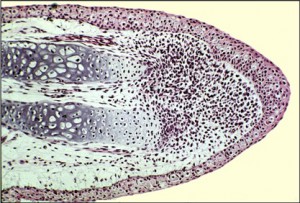
On April 22, 2015, the BTC Institute and Promega Corporation will host the 10th Annual Wisconsin Stem Cell Symposium — Engineering Limb Regeneration: Recapitulating Normal Development and Regeneration? Our colleagues at the University of Wisconsin-Madison have put together an outstanding list of presenters who will address advances – and challenges – associated with this field of research.
Spanning many fields, including developmental biology, stem cell research, and biomedical engineering, tissue engineering is an area of interest to scientists for many reasons. Though limb regeneration is currently more science-fiction than reality for humans, efforts to understand the mechanisms for tissue repair and re-growth have shown promise for clinical translation.
As presenter David Butler, Ph.D. notes in his abstract:
Given the frequency of musculoskeletal injuries and the lack of consistency in surgical outcomes, it is not surprising that researchers have turned to novel therapies like tissue engineering to regenerate rather than just repair these damaged structures. While some have focused their research on incremental improvements in adult tissue healing, others have employed the paradigm of mimicking aspects of normal tissue development to improve the result.

- Historical perspectives on limb regeneration
- The role of epigenetic modifications that regulate limb regeneration in anurans and the implications of recent studies on the urodele transcriptome
- Terminal phalanx regeneration in mammals
- Challenges to the generation of functional musculoskeletal tissues from stem cells and how developmental and regenerative biology can help address the challenges
- Regeneration of musculoskeletal tissues of a limb, including skeletal muscle, tendon/ligament, bone and cartilage, using stem cell-based engineering approaches
For more information and to register, please visit: http://www.btci.org/stemcell/default.html
